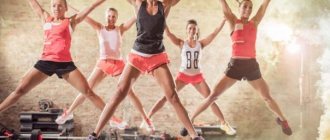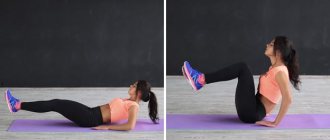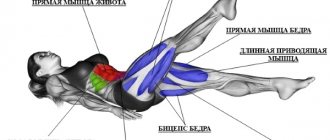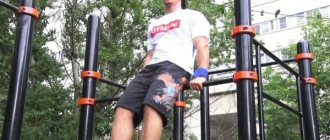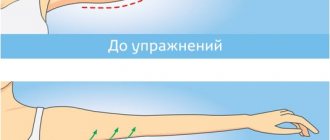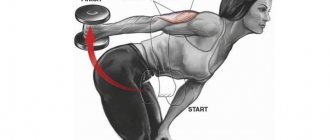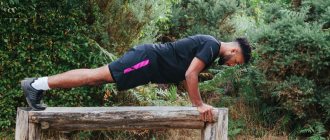The essence of acrobatics
Acrobatics as a skill is not accessible to everyone, so people begin to practice it from childhood. This is a type of sports activity and a special type of gymnastics, which is aimed at developing certain physical characteristics of a person, namely:
- strength;
- balancing;
- orientation in space;
- flexibility;
- dexterity;
- jumping ability;
- precision of movements;
- speed of action;
- vestibular apparatus training.
diligence; organization; responsibility; courage; caution; determination; strength of will; consistency with the partner.
- as basic elements in physical education lessons at school;
- as part of general strengthening sports exercises;
- in a complex of activities related to weight loss;
- in the professional training of athletes of various disciplines - from gymnasts to swimmers and hockey players.
Important! Acrobatics is the basis for any physical activity. It includes basic exercises that can be performed by almost everyone. As skills develop and physical fitness improves, they become significantly more difficult.
As skills develop and physical fitness improves, they become significantly more difficult.
Acrobatics classes increase muscle strength and muscle extensibility, strengthen the muscular corset, cardiovascular system and joint-ligamentous apparatus, which allows you to improve motor abilities and achieve good physical development.
The entire complex of acrobatic exercises is divided into 3 large blocks:
- balancing;
- jumping;
- throwing exercises.
For beginners, these are basic exercises like bridges, somersaults and splits. As you master, simple exercises become more difficult from level to level. The lesson ends with a warm-up, when relaxing exercises are given, during which the muscles rest.
Where does aerobics begin?
Like any other sport, aerobics must begin with a warm-up.
We bring to your attention exercises that will help prepare your body for a more complex load at home.
Stretch your neck muscles
We stand straight, feet shoulder-width apart. Now we begin to perform circular movements of the neck clockwise, then counterclockwise. Number of repetitions – 10 times.
Without changing the starting position, we tilt our head forward, then back. Now left and right. Number of repetitions – 10 times in each direction.
Stretch the muscles of the arms and shoulder girdle
Without changing the starting position, we bend the arms at the elbow joint and place our palms on the chest. Now we move our elbows back, first in a bent position, then in an unbent position. The number of repetitions is at least 15 times.
We stand straight, lower our arms down and relax them. We make circular movements with the shoulder joint, first in one direction, then in the opposite direction.
Stretch your core muscles
We stand straight, spread our legs at shoulder level, and place our hands on our belts. We begin to make turns with the body, first in one direction, then in the other.
This must be done carefully, with a gradually increasing amplitude of movement and speed. The number of repetitions is at least 20 turns in each direction. Without changing the initial position, we bend to the right and left, and we also need to reach with our hand in the direction in which we are leaning, for example, we lean to the right and stretch with our left hand
Number of repetitions – at least 10 bends in each direction
Without changing the initial position, we bend to the right and left, and we also need to reach with our hand in the direction in which we are leaning, for example, we lean to the right and stretch with our left hand. Number of repetitions: at least 10 bends in each direction.
We put our legs together and try to reach our toes with our hands.
We begin to do this exercise carefully and slowly, then gradually increase the pace. The number of repetitions is at least 20 inclinations. We stand up straight (if you are working out at home, then you need to stand near a wall or cabinet so that if something happens you can hold on) and bend one leg at the knee joint
Now we grab the heel with our hand and pull it towards the buttocks. Then we change the leg and do the same thing. Number of repetitions – 10 times on each leg
We stand up straight (if you are practicing at home, you need to stand near a wall or cabinet so that if something happens you can hold on) and bend one leg at the knee joint. Now we grab the heel with our hand and pull it towards the buttocks. Then we change the leg and do the same thing. Number of repetitions: 10 times on each leg.
And finally, we stand on our toes, raise our arms and stretch as high as possible. We lower ourselves to the starting position and rest. The number of repetitions is at least 10 times.
“Swallow” with emphasis on knees and elbows
The next variation of the standard “swallow” is an exercise performed with emphasis on the knees and elbows. This technique allows you to train muscles:
The execution technique includes the following steps:
- Get on your knees and lean on your elbows.
- Straining the muscles of the right (left) leg, slowly stretch it to a position parallel to the floor.
- Then we continue to move the leg higher, reaching an angle of approximately 45 degrees from the parallel of the floor.
- Slowly lower your leg to the starting position. Repeat the exercise.
You need to do 10-12 approaches on each leg.
The following errors may occur during execution: the leg is not raised enough, the knee is bent, the muscles are not tense.
Varieties of boat
After mastering the basic technique of performing a boat, you can move on to more complex techniques.
Boat in a storm
- Starting position: lying on your stomach.
- Raise your body and legs, stretching and clasping your feet with your hands.
- We swing alternately forward and backward, maintaining balance and not falling on our side. As you exhale, lower your arms and legs and lie on your stomach. Let's rest. We perform the exercise for at least 4 approaches.
Boat on the side
- Starting position – lying on your side.
- We lift the body and legs to a height of 10-15 cm from the floor (the pelvic bones and lower thoracic region serve as support). At the top point, the body position must be fixed for 10-30 seconds.
- Then return to the starting position. The exercise is performed in several approaches on one side, then turned over and repeated on the other side.
When performing a complicated version, it is important to pay attention to breathing. A uniform and calm breathing cycle is the key to proper technique and cardiovascular health.
Sources
- https://FitNavigator.ru/baza-uprazhnenij/lodochka-superman.html
- https://bodysportal.ru/uprazhneniya/lodochka/
- https://sportfito.ru/publication/uprazhnenie-lodochka/
- https://kachajsya.ru/uprazhneniya/uprazhnenie-lodochka.html
- https://fitnessi.ru/ochen-effektivnoe-i-poleznoe-dlya-spiny-uprazhnenie-lodochka/
- https://ProstoFitness.com/baza-uprazhnenie/drugie/lodochka-dlya-spiny.html
- https://spina.guru/raznoe/uprazhnenie-lodochka-spiny
- https://zhenskoe-mnenie.ru/themes/health/uprazhnenie-lodochka-kak-delat-pravilno-i-maksimalno-effektivno-dlia-organizma-prorabotka-trudnodostupnykh-myshts-s-pomoshchiu-uprazhneniia-lodochka/
- https://life24.xyz/zozh/uprazhnenie-lodochka-press.html
- https://fb.ru/article/290432/uprajnenie-lastochka-osobennosti-vyipolneniya
- https://bestlavka.ru/kak-pravilno-delat-uprazhnenie-lodochka-dlya-spiny/
- https://bodybuilding-and-fitness.ru/zanyatiya-sportom-dlya-nachinayushih/fitnes-doma/uprazhnenie-lodochka.html
"Swallow" from the belly
This “swallow” exercise is difficult, despite the simplicity of the technique. It also has a second name – “boat”. A training program for girls for weight loss must necessarily contain this exercise, since it has all the advantages of the previous techniques, namely:
- strengthens back muscles;
- tightens the abdominal muscles;
- trains the buttocks and thighs;
- prevents the occurrence of back diseases.
To successfully perform this exercise, you need to have some physical training. It is enough if you have performed the two previous techniques and performed the “swallow” exercise. You will definitely succeed.
The “swallow” on the stomach is quite simple to perform. The exercise is done in 3 steps:
- Lie on your stomach with your arms extended forward and your legs together.
- At the same time, raise your arms and legs above the floor surface as much as possible.
- Freeze in this position for 30-60 seconds.
Relax and take a break of 1-2 minutes, then repeat the exercise. If you find it difficult to hold this position for 30-60 seconds, start with the maximum time for you, but be sure to do several approaches.
What muscles are involved?
The swallow is considered a universal gymnastic exercise, useful for all people without exception. We especially recommend performing it at home for people who lead a sedentary or simply sedentary lifestyle. Exercise creates a good healing effect by strengthening the immune defense. But what muscles work when performing a swallow? There are quite a lot of them:
- rectus and oblique abdominal muscles;
- lumbar muscles;
- biceps leg muscles;
- calf;
- gluteal muscles;
- hamstrings;
- deltoid muscles;
- trapezius and rhomboid muscles of the back.
Classic swallow technique
Stand up straight with your legs closed and stretched out straight. Place your arms straight to the sides at shoulder level, and then lean on one leg and tilt your torso forward. Simultaneously with this movement, lift the other leg off the floor and pull it back, lifting it to the level of the pelvis.
Keep your arms spread to the sides and use them to maintain balance, and raise your head and look in front of you. The back should be straight and parallel to the floor. Hold for a few seconds and then return to the starting position.
Beginners practicing the acrobatic swallow exercise, after looking at pictures on the Internet, often make the same mistakes. For example, many people lower their leg while bending their torso forward or bend their supporting leg at the knee. Most often the cause is insufficient stretching, but this is fixable, so keep training. Two more errors are associated with curving the back and lowering the arms.
Look at the photo of what a real swallow looks like and do everything according to our instructions, but put your phone in front of it and record a video. This way you can look at yourself from the outside and refine your technique. Do up to 12 repetitions, alternating legs.
Swallow with a ball
We bring to your attention a description of the technique of performing a swallow with a ball. This technique is somewhat different from the classic one, since you do not have to spread your arms to the sides, but rather stretch them out in front of you, holding the ball.
Let us immediately note that it is not always convenient to perform the exercise with a small ball, and you may feel discomfort in your shoulders. Use a ball with a diameter of 30-50 centimeters.
Standing straight on the floor and taking the ball in your hands, lift it above your head, and then begin to bend down with it and move one leg back. The torso with the leg raised and arms extended forward should form a straight line parallel to the floor. After pausing briefly, return to the starting position. Perform 10-12 repetitions on each leg.
Swallow on belly
There is a simplified variation of the exercise - this is a swallow lying on your stomach. The technique is very different, and this exercise is also called the boat or superman. You need to lie on your stomach with your arms extended straight in front of you. At the same time, lift your arms and legs off the floor, raising them as high as possible.
You will feel a lot of tension in your hamstrings, glutes, and lower back. Hold in the top position for 5-10 seconds, and then lower and relax, and so on for 8-12 repetitions. Performing a swallow with this technique is useful for both adults and children. The exercise does not develop the vestibular apparatus and does not involve the abdominal muscles so much, but it is also very effective and useful.
Swallow on her knees
The last variation of the swallow technique involves standing on the elbows and knees, and the exercise is intended to train the back, abs, gluteal muscles and thighs.
You need to kneel and lean on your elbows, then tense one leg and slowly lift it, stretching it back until it is parallel to the floor. Then continue to smoothly lift your leg higher, aiming to achieve a 45-degree angle relative to your back. Then slowly return your leg to the starting position and repeat the movement.
It is necessary to do up to 10-12 repetitions on each leg. This variation of the back swallow is suitable for children and adults who do not know how to do the classic exercise. Spend 5 minutes a day practicing, and within a few weeks you will be able to confidently perform even a swallow with a ball.
How to perform "Swallow"
It might be useful to read:
- Guru or spiritual guide in tantra;
- Exercises for the stomach;
- How to get rid of cellulite? ;
- Stages of cellulite development;
- Autogenic training (basic exercises);
- Four Yogas of Swami read, Four Yogas of Swami read for free, Four Yogas of Swami read online;
- Yoga: tips for beginners;
- How to do yoga correctly;
“Swallow” with emphasis on knees and elbows
The next variation of the standard “swallow” is an exercise performed with emphasis on the knees and elbows. This technique allows you to train muscles:
The execution technique includes the following steps:
- Get on your knees and lean on your elbows.
- Straining the muscles of the right (left) leg, slowly stretch it to a position parallel to the floor.
- Then we continue to move the leg higher, reaching an angle of approximately 45 degrees from the parallel of the floor.
- Slowly lower your leg to the starting position. Repeat the exercise.
You need to do 10-12 approaches on each leg.
The following errors may occur during execution: the leg is not raised enough, the knee is bent, the muscles are not tense.
Exercise options
There are several options for performing the Swallow exercise. These differences can be grouped according to common characteristics.
Starting position:
- standing;
- from rest on the knees and elbows;
- lying on the floor.
Hand position during the exercise:
- placed apart on the sides of the body;
- extended forward;
- holding the ball;
- on the belt, etc.
Let us describe in order several types of exercise.
Swallow with a ball is performed from a standing starting position
. The technique of execution is not much different from the usual “Swallow”. Before starting the exercise, place a ball large enough at your feet so that there is no discomfort in your shoulders when doing it.
Raise the ball above your head, holding it with your palms. While leaning forward with the ball, one leg is pulled back. The torso takes a position parallel to the floor. The stomach is pulled in. The body weight is concentrated on the leg, which is on the floor. The second is straightened behind the body and fixed parallel to the floor in the same plane as the body. They return to the starting position, simultaneously straightening the torso and placing the extended leg on the floor. As a warm-up exercise, perform ten times in several approaches.
.
The “Swallow with a ball” exercise is performed by weightlifters as a mandatory training exercise to develop coordination of movement and develop the muscles of the back, buttocks and hips, and increase the mobility of the hip joints.
The swallow exercise, resting on the knees and elbows, trains body balance in a more gentle way and is also intended for the hips and buttocks. This option can be considered more lightweight; it is suitable even for those who, due to their characteristics, cannot perform a regular swallow.
From the starting position on your knees and elbows, your legs alternately rise and stretch back parallel to the floor. It is not the toe that is pulled forward, but the heel. The back is straight. The neck is stretched forward, the head is in line with the body, face down. Raising your leg and stretching it out as much as possible, slowly take three deep breaths and exhales and lower it to the starting position. Repeat lifting three times
. Switch to the other leg. Don't forget to breathe evenly and deeply.
Swallow from the starting position lying down
. Lie on your stomach face down, arms extended in front of the body, legs together. As you inhale, simultaneously lift your arms and legs off the floor, stretching them as far as possible. Try to raise your hips and chest as high as possible. Pull up your socks. As you exhale, lower yourself to the starting position. Repeat several times.
The “Swallow” exercise in all its variations trains the vestibular apparatus to varying degrees. Very useful for the muscles of the thighs, buttocks, and abs, tightening them and making them elastic. Promotes the development of concentration, endurance, and a sense of balance. Corrects posture by training the muscles that support the spine.
“Swallow” on the horizontal bar (horizontal hanging from behind) is a rather complex static element of artistic gymnastics and. The essence of the element is that the athlete uses muscle power to hold his body parallel to the ground, holding the horizontal bar with his hands.
The “swallow” received its name for its similarity to this bird, especially if the element is performed with legs apart. The horizontal hang from behind looks quite impressive, so many workout athletes are wondering how to learn how to do a swallow on the horizontal bar.
Standard exercise
The standard swallow exercise has the following advantages:
- Improves coordination in space and trains the vestibular apparatus.
- Prevents curvature of the spine and the occurrence of scoliosis.
- Trains the back and abdominal muscles.
The technique is not complicated and includes only three steps:
- Stand in the middle of the room with your feet together and your arms raised parallel to the floor.
- Tighten your abdominal muscles and slowly extend your right (left) leg back while bending over the floor until your leg and torso are parallel to it.
- Freeze for 10-15 seconds and repeat the exercise with the next leg.
If you are starting your exercises for the first time, then 5 approaches for each leg will be enough for you.
Typical mistakes when performing the exercise: arms are lowered and not parallel to the floor, the supporting leg is bent at the knee.
Benefits of the BOAT exercise 9 facts
This movement is easy for those who are in good physical shape. Those who have recently started practicing it should try to follow all the necessary recommendations when performing it in order to quickly master it and get the desired result - a slim figure and a toned stomach.
This movement uses a huge variety of different muscle groups. What muscles work:
It also has many positive properties:
1. Formation of ideal posture. Correct posture is not only aesthetically important, but also contributes to the anatomically correct location of internal organs. Although the “Cat” movement for the spine is more effective for posture.
2. Strengthening the corset muscles. Helps form the correct position of the spinal column, prevent osteochondrosis and other spinal diseases.
3. Development, first of all, of the joints of the spine, as well as the shoulder and hip joints. Stimulating the production of joint fluid and strengthening the cartilage layer.
4. Improving blood flow in internal organs and tissues.
5. Restoration of the disturbed muscle tension-relaxation process. Due to pain and spasms in the back muscles, this process is disrupted, and it can be difficult for the muscles to relax even at rest.
6. Beneficial effect on various body systems - the vascular system, the digestive system and others.
7. Restoration of disrupted nerve impulses. Superman helps relieve muscle spasms, release nerve roots and restore normal organ function.
8. This movement is included by therapeutic gymnastics instructors in exercises for the treatment of various spinal curvatures and osteochondrosis. In this case, it is necessary to contact a doctor to clarify the nuances of performing a swallow, since with varying degrees of curvature, the types of loads and their quantity are individually selected for each patient.
9. This movement also helps remove fat from the lower back.
Gymnastics for the cervical and lumbar spine
Exercises for the lower back
Hanging on the horizontal bar
Hang on the bar and breathe evenly. Slowly pull your bent legs up and hold in this position for 15-20 seconds
Gently straighten up and repeat leg curls 2-3 times
Let your muscles rest for a few minutes between sets.
Curls while hanging
As in point 1, hang on the horizontal bar and slowly turn your pelvis alternately to the right and then to the left. Try not to strain your back.
"Bridge"
Lie on the floor, place your arms along your body. Bend your knees and lift your pelvis up, resting on your feet. The arms and neck remain in place. Slowly lower your body down and repeat the exercise 10-15 times.
Circular movements of the hips
Standing on the floor, place your hands on your waist and begin circular movements with your pelvis, first to the right, then to the left. Repeat 5-10 times.
Neck exercises
Pressure
- Sit on a chair, join your hands and place them on the back of your head. Press your head into your palms and hold the position for 30 seconds. Do 2-3 approaches.
- Press your forehead onto the palm of your hand pressed to your head. Hold the pose for 10 seconds and repeat 5-7 times.
- Head turns. Sit up straight and alternately turn your head to the right and left sides. Perform 5-7 times.
- Lower your chin to your chest and turn your head in different directions, as in step 3.
- Lie on the floor, rest your elbows and lift your head up. Hold the position for about 30 seconds, then you can move on to turning your head. Do the exercise slowly.
Back diseases are always a serious pathology, affecting the functioning of almost all organs and systems. To prevent their development, regularly perform exercises at home and try to keep your back straight after gymnastics. Published by econet.ru.
PS And remember, just by changing your consumption, we are changing the world together! econet
"Swallow" from the belly
This “swallow” exercise is difficult, despite the simplicity of the technique. It also has a second name - “boat”. A training program for girls for weight loss must necessarily contain this exercise, since it has all the advantages of the previous techniques, namely:
- strengthens back muscles;
- tightens the abdominal muscles;
- trains the buttocks and thighs;
- prevents the occurrence of back diseases.
To successfully perform this exercise, you need to have some physical training. It is enough if you have performed the two previous techniques and performed the “swallow” exercise. You will definitely succeed.
The “swallow” on the stomach is quite simple to perform. The exercise is done in 3 steps:
- Lie on your stomach with your arms extended forward and your legs together.
- At the same time, raise your arms and legs above the floor surface as much as possible.
- Freeze in this position for 30-60 seconds.
Relax and take a break of 1-2 minutes, then repeat the exercise. If you find it difficult to hold this position for 30-60 seconds, start with the maximum time for you, but be sure to do several approaches.
How to get quick results from the boat exercise
If you are serious and don't want to waste your time. There are several mandatory principles and conditions that we recommend that you comply with.
Our main goal is to strengthen the back muscles quickly.
3 basic rules for effective results:
- Physical activity for all muscle groups.
- Proper nutrition.
- Good healthy sleep.
Let's take a closer look at each component of success.
Physical exercise
Our goal is to strengthen the back muscles. Physical therapy exercises, exercises in the gym, and simple swimming in the pool are suitable for this. The more time you spend and train your back, the faster you will reach your goal. You should exercise for 200 minutes a week, and you need to train all the muscles of the body with a more in-depth focus on the back muscles.
Nutrition
Without proper nutrition, you can forget about quick results. If you don't have enough protein in your diet or don't drink enough water, your body will be constantly dehydrated and it will be difficult to grow additional muscle tissue. The muscles will, of course, strengthen, but very slowly. Accordingly, it will take a lot more effort, time and training if you don’t understand proper nutrition.
The most important thing to strengthen the muscles of the lower back and to perform the boat exercise well is to fulfill 2 conditions:
- Eat carbohydrates 2 hours before training. These are porridge, potatoes, pasta.
- Eat protein within 1 hour after training. This is cottage cheese, fish, meat. Try to keep the total amount of protein consumed per day sufficient in your diet. On average, 1.5g of protein per 1 kg of your body.
Dream
The average sleep duration should be 7-8 hours. Try to go to bed before midnight and wake up earlier. The sooner you fall asleep, the better quality of sleep you will have, and therefore muscle recovery and growth.
By following all three rules, you will always be in excellent health and mood, strengthen your back well and your muscles will always be in the right tone.
What is the use of "Swallow"?
All trainers and doctors note the high benefits of exercise for children and adults. By devoting just 5 minutes a day to it, you will achieve the following results:
- work your abs and back muscles, forming a strong muscle corset;
- strengthen the solar plexus area;
- you can get rid of fat deposits on your stomach and sides;
- improve blood circulation in general;
- straighten a curved spine;
- increase joint mobility and elasticity of cartilage tissue.
Main groups
All acrobatic exercises can be divided into two large groups - those that are performed dynamically and those of a static nature.
Dynamic exercises
Dynamic acrobatic elements are performed in motion and represent the rotation of the athlete's body. It (as well as turning over the head) can be either complete or partial.
Regarding the presence of support or its absence, inversion occurs:
- with support (somersaults);
- with intermediate support (inversions);
- without support (somersault).
Let's take a closer look at each exercise from the dynamic group:
- Roll. When performing this element, the support alternately touches the support with any rotating part of the body, but turning over the head does not occur. Can be performed with or without bending, alone or in a group, forward, backward and to the sides.
- Somersault. The body consistently turns over its head. This occurs inseparably from the floor and is accompanied by alternate contact of the support with individual parts of the body. Somersaults can be directed forward, backward or to the side. They are carried out solo, in pairs and in a group.
- Movement in an arc or extension. This element is characterized by the fact that the acrobat moves from a lying position to a standing position. Bend at the shoulder blades and place emphasis on them.
- Somersault. This is the name for turning over completely in the air over your head without support. Can be performed solo or in pairs; forward, backward and sideways.
- Half-flip (without full body rotation). Jumping occurs from one part of the body to another: for example, from feet to hands and back.
- Coup. It is performed with a complete inversion over the head, but the supports touch only the limb - arms and legs or only the arms. It can be carried out in a forward or backward direction, standing in one place or moving with a running start.
Did you know? The most significant factor in reducing flexibility
—
This is not the aging of the body, but a sedentary lifestyle when muscles atrophy.
Static exercises
This group contains exercises that are performed without movement, in a static position, and consist of supporting the body so that it takes a certain pose and maintaining its balance.
The static group includes:
- "Leg-split". This is a pose when both legs form one line, or one moves forward and the other back (or both legs move to the sides). Good muscle stretching is required. Performed while sitting on the floor or with the support of a partner.
- "Bridge". The name speaks for itself. You need to bend back in a “bridge-like” arc (using your arms bent at the elbows. Your legs are also bent. Your back “looks” at the floor.
- "Rack". This is the name for a pose when the body is in a static position upside down with emphasis only on the arms or on the arms and head.
It will also be useful for you to learn about the complex of morning exercises, as well as what game stretching is.
How to improve your posture
Orthopedic chair
If you have a sedentary job, for example, you work as a programmer, then in order to prevent various diseases of the spine, it is recommended to take regular breaks (preferably every hour). Do a little exercise for your back: walk around the room a little, bend in different directions, squat and rotate your head. This will improve blood circulation in the spinal area.
Improving posture
While standing for a long time, place one foot on a small hill (stand or step), and then change legs. Such manipulations allow you to relieve the spine, which, if you stand for a long time in relative immobility, experiences increased stress. You also need to have the right approach to lifting weights. Watch your body: while lifting a heavy object, your back should remain straight and your legs slightly bent at the knees. This will prevent various injuries to the lumbar region.
What is correct posture
It is also recommended to sleep in a certain position so as not to put strain on the lower back. First of all, to improve your posture, you should lie on your back, placing a small pillow under your feet (under your knees). At the same time, doctors do not recommend sleeping on your stomach or side, as this negatively affects the health of the lumbar region.
Video - How to strengthen your back muscles at home
Choose among the best clinics based on reviews and the best price and make an appointment
Show all Moscow clinics
Show all Moscow specialists
Children from 1 to 3 years old will enjoy simple daily exercise
- First, you need to warm up your muscles; together with your mother you can dance, jump, and run a little. 5-10 minutes is enough.
- "Martin". We all remember this exercise from childhood. I won't describe it. Let me just remind you that it is necessary to change the supporting leg. Repeat the exercise on one leg, then on the other leg.
- "Basket". IP: lying on your stomach. You need to grab your ankles with your hands and stretch upward to form a small basket. The first few times, be sure to help the baby, show yourself how it should turn out correctly. Then the child will complete the task independently.
- "Barrel". IP: Lying on your back, legs bent at the knees. You should hug your legs, knees, and curl up into a ball. Then roll forward/backward, left/right.
- "Bike". Have you heard of this one? This exercise will strengthen not only the baby’s back, but also the abs. Do it together. Keep in mind that it will be difficult for your baby to make rotational movements with his legs.
- "Crocodile". Honestly, I don’t know the correct name for this movement, but my son loves to play crocodile. You definitely know this movement. IP: the child lies on his stomach, the mother takes his legs in her hands, the baby walks in her arms. And the more, the better. Start small
- "Kitty." Another familiar exercise. Does everyone remember the technique? The main thing is not to fall on your stomach on the floor, but to hold on to your hands, strain your back and bend well while performing.
Allow your fidgets to jump and run. Children from 5 years old can easily climb up and down ladders and ladders. If possible, visit the pool. Everyone knows that during swimming all muscle groups are involved.
Standard exercise
The standard swallow exercise has the following advantages:
- Improves coordination in space and trains the vestibular apparatus.
- Prevents curvature of the spine and the occurrence of scoliosis.
- Trains the back and abdominal muscles.
The technique is not complicated and includes only three steps:
- Stand in the middle of the room with your feet together and your arms raised parallel to the floor.
- Tighten your abdominal muscles and slowly extend your right (left) leg back while bending over the floor until your leg and torso are parallel to it.
- Freeze for 10-15 seconds and repeat the exercise with the next leg.
If you are starting your exercises for the first time, then 5 approaches for each leg will be enough for you.
Typical mistakes when performing the exercise: arms are lowered and not parallel to the floor, the supporting leg is bent at the knee.
Exercise options
Depending on the level of training, a person performs the exercise options available to him. To do this, there are several types of “Folds” difficulty:
- Dynamic. This type perfectly warms up the muscles. Take your starting position. Stretch your head up. Raise your hands and then place them on your hips. Now make gradual bends, lowering your stomach to your feet. To start, do slight inclines. Gradually going deeper and not rising to the starting position. Do about thirty times to warm up your muscles.
- Reverse. The initial position is: the body resting tightly on the hips. The legs are bent. Hold your feet with your hands. Now gradually straighten your legs. Do this slowly so you can get used to the new position. This “Fold” does not strain the muscles so much.
- Socks from myself. It is better to start the “Fold” exercise and get to know it with this option. Since with the toes extended away from you, there is less load on the popliteal fossae. That is why this option is easier for beginners.
- Socks on yourself. Accordingly, this option is more complex. Since now the popliteal fossae are already included. They tell us about this with nagging pain. The main difference from the previous version of the exercise is that your toes should be directed towards you.
- With weight. Here you will need the help of another person. This option assumes that we will be pulled with the help of a partner.
- With support. A more complicated option for those whose body fits perfectly on their feet. Gymnastic cubes or rollers are placed under the heels. And your partner gently presses on your back. This option will allow you to stretch your knees perfectly.
Exercises for Beginners
Not all acrobatic elements are difficult to perform. The simplest exercises can be performed not only by children, but even by adults without special long-term training (it is enough to have some stretching).
"Martin"
"Martin"
- a basic exercise that is included in school physical education lessons. Its essence lies in the ability to maintain balance for a long time while standing on one leg. There is a simpler method of execution that is suitable for beginner adults, and a more complex one for children.
A simple “swallow” is performed in a knee-elbow position:
- get on all fours, rest your elbows on the floor, holding them at a right angle and strictly under the shoulder joints;
- take one leg back and straighten so that the leg, back and head form a straight line;
- freeze for 5 seconds;
- The exercise can be complicated by abducting the leg even higher so that the foot can touch the head.
Video: technique for performing the acrobatic exercise “Swallow”
A more complex "swallow" is performed with balancing on one leg, which is the basis of many more complex tricks:
- stand up, keeping your back straight and your knees straight;
- pull one leg back, pulling the knee in and keeping it straight;
- tilt your torso forward, straight back;
- spread your arms to the sides (they should be in the same plane with the body);
- stand on one leg (the other leg and back should form a straight line);
- maintain balance without bending your knee and back;
- hold the position for 5 seconds;
- Over time, you can increase the time spent in the position.
Video: technique for performing the “Swallow” exercise
"Basket"
When performing this element, the anterior muscles of the thighs and torso are stretched. Proceed as follows:
- take the “lying on your stomach” position;
- bend your knees, raising your feet towards your head;
- raise your head and chest above the floor, reaching your hands back to your legs and clasping your feet with your palms;
- pull your legs towards your head, arching your back;
- Keep your pelvis on the floor, and try to lift your hips, upper abdomen and chest off the floor, forming a so-called basket with your body.
Video: technique for performing the “Basket” exercise
"Longitudinal twine"
It originates in gymnastics. At first glance, it seems simple, but it requires good muscle stretching. It is impossible to reach this level in just a few lessons. The older a person is, the harder his muscles stretch. It will take several weeks of systematic training to master this exercise.
The technique of doing the “splits” is quite simple:
- You can start the exercise only after an active warm-up;
- kneel with one leg and bring the other forward, bending it at the knee joint at a right angle;
- take the “palms on the floor” position;
- slowly move the leg with the knee on the floor back, trying to straighten the knee;
- gradually bring the front leg forward, also leveling the knee;
- make springy sways up and down while aligning your knees and spreading your legs.
Video: technique for performing the “Longitudinal splits” exercise
The goal of the “split” is to sit completely on the floor so that your legs, spread in opposite directions, lie on the floor, forming one continuous, straight line. When the required stretch is achieved, springy swaying will not be needed, and you will be able to do the splits right away.
Did you know?
There is a myth: in order to do the splits, you just need to regularly stretch your muscles. This is not entirely true, because muscle fibers that lack tone stretch much worse. Therefore, you need to alternate stretching and strength exercises.
"Cross twine"
The technique of execution is almost the same as the longitudinal one, only the legs diverge in a straight line to the sides on the sides of the body, and not back and forth.
The technique is almost the same:
- after warming up, squat down;
- place your palms on the floor;
- spread your legs to the sides, aligning your knees;
- try to lower your pelvis as low as possible to the floor until you sit down completely;
- if there is a gap between the pelvis and the floor, make several springy movements, then take the starting position.
Video: technique for performing the “Transverse splits” exercise
When the stretch is sufficient to fully do the splits, kneeling or squatting is not necessary. You will be able to simply “split” into a split from the “standing on straight legs” position.
Once the stretching is good and you have mastered the longitudinal and transverse splits, many other acrobatic exercises will seem easy, since most of them are performed based on the basic elements described above. All these basic exercises are also used in gymnastics.
The meaning of this exercise
To ensure that the results of these exercises are not in vain, follow these rules:
- Exercise regularly. If you are a beginner, you can devote 3 days a week to classes for 20-30 minutes - this will be enough for you. Do not abandon your studies even for a few days, otherwise the result will be lost.
- Increase the load. Your training will be useless if over time you do not increase the number of approaches and duration of training. After 2 weeks of regular exercise, you can increase the number of workouts to 5-6 per week. After a month, start increasing the number of approaches for each exercise, increase the training time to 40 minutes, etc.
- Constantly monitor the correctness of the exercises. If you make a mistake, it may become a habit, and there will simply be no result from the exercise.
This way you can not only lose weight, but also strengthen your body, develop muscles and endurance, improve tone, lift your mood and recharge your batteries.
(Told by master of sports in rhythmic gymnastics Yulia Sitnikova)
You've probably had the opportunity to watch gymnasts perform on TV more than once, how they masterfully perform the most complex technical elements. All this is many years of training. And where did it all begin? Mothers bring little tiny creatures to rhythmic gymnastics at the age of 4-5 years. The first year is one of the decisive stages: girls learn the basics of gymnastics - the basic basic elements, they are stretched, they do a lot of flexibility exercises, they pump up the muscles of their legs, abs, back, arms, and learn to pull their toes and knees. And most importantly, girls begin to feel (control) their bodies. In this article we will look at the main (basic) elements with which rhythmic gymnastics begins.
There are several types of twines: right, left, transverse and vertical. The vertical is a more complex element and here, in addition to stretching, you also need to be able to maintain balance on one leg. Stretching is very important for a future gymnast. Therefore, the element needs to be given a lot of attention, especially to the correct execution. Before doing stretching or flexibility elements, you must first “warm up” the child. Jump a little, run with him, do squats, squat (like ducks) so that the child’s muscles are elastic and easier to stretch. Remember - never pull on an unheated (“cold”) child; in addition to pain, you can also damage the baby’s ligaments. Do not do anything abruptly, only with smooth movements and springing several times.
There are several ways to stretch for splits:
Properly executed twine:
- right or left split: the child sits on the split, shoulders and hips are on the same line, the back is flat, the knees and toes are tense; - transverse split: stand on the side and look, if the legs are on the same line, the knees and toes are tense, then the child is sitting Right. If there is no line (i.e. a corner instead of a line), then it is not a split, but legs apart).
